The Article
OREA INDIGO ISOLATION FEET – ISOACOUSTICS
6th June 2018
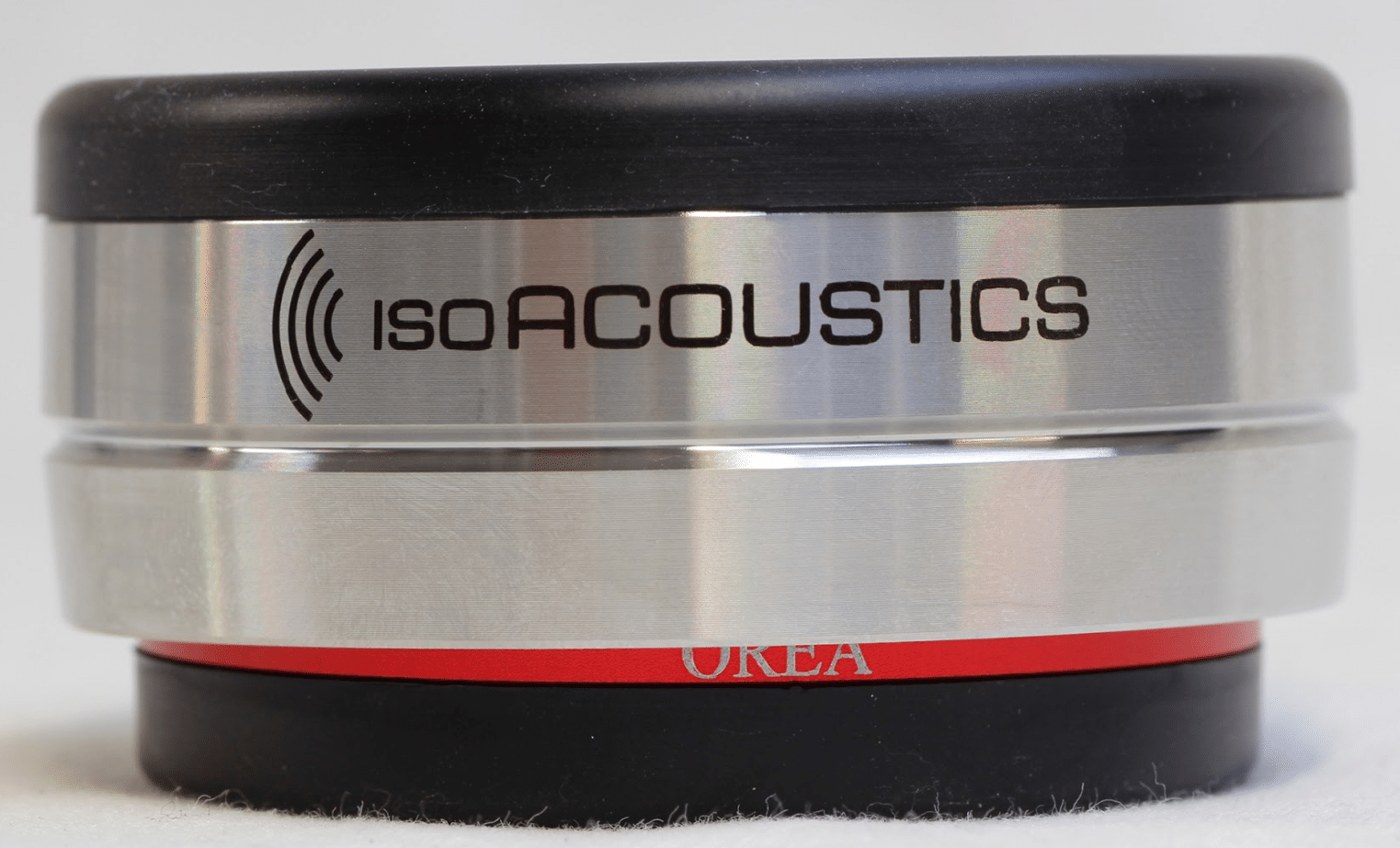
Looking to reduce the noise from your hi-fi components? Paul Rigby tries the IsoAcoustics Orea Indigo isolation feet to see if they can do the job
Just because a hi-fi component is well designed, doesn’t mean that it’s not awash with detail-veiling noise. It is. No matter how expensive the item. Also, just because you place that hi-fi component on a quality piece of shelving, with great cables and possibly lots of other de-noising accessories, doesn’t mean that noise still exists. It more than certainly does. I could install a million pound hi-fi system into your listening room but then I’d need to spend a week trying to remove the noise from the thing (although the better the system, the more noticeable will be the effects of noise reduction).
I’m talking about the room, different types of vibration, RF and a dozen other variants. All damage sonics.
I’m sure that you do the best you can to get rid of the stuff but you should never lose an opportunity to tackle this issue. Noise is everywhere and you have my permission to come over all OCD about it. The best sounding hi-fi chains probably tackle the notion of noise removal in 20 different ways.
One of those ways is individual isolation feet that fit underneath components: your amplifier, CD player, phono amplifier, turntable, DAC…whatever the box might be. These things help to present drain points for your kit, allowing noise a place to escape instead of merrily bouncing around inside the chassis and travelling up and down your interconnect and mains cables.
As I infer above, isolation feet are not the solution – nothing is. Use these things but don’t expect the problem solved. Isolation feet will help to reduce noise, though, and are essential parts of the overall toolkit.
IsoAcoustics Orea Series is the latest release in the isolation foot genre. Available in two variants, the Bordeau features a higher maximum weight value of 14.5kg – aimed at larger separates such as mono-block amplifiers but I decided to address the Indigo variant (spanning 6 x 3cm in size) that features a weight cap of 7.2kg per unit or most integrated amplifiers and turntables and the like.
You’ll see a brand name on the side of each puck. The company says that the feet work best with the ‘Iso’ logo facing forward, as the isolators are tuned to resist lateral movements.
Although keeping quiet about the internal make-up of the noise-reducing components inside, the company did declare that the unit’s upper flange, “‘suction cup’ design adheres to the underside of the product,” while the upper portion of the foot then becomes, “‘live’ with the component, while the lower isolator adheres to the supporting surface. All the energy is managed within the core of the Iso-Puck’s isolators which are carefully tuned…while remaining on-axis. Three or more Iso-Puck’s may be used depending on the total weight applied.” So let’s see how they performed.
SOUND QUALITY
I began the sound tests with vocal jazz and Peggy Lee’s Raindrops Keep Fallin’ on My Head from the 1971 original release, Raindrops (Capitol).
I chose this track for a specific reason, the Lee delivery. On this song Lee’s vocal not only dominates the song, her vocal delivery tries to swamp almost the entire soundstage. This is down the the slightly forward nature of the mastering, there may be some compression in there but the voice is also largely uncontrolled in the mix, so it permeates areas where it shouldn’t, masking detail elsewhere. An undisciplined or noise-heavy hi-fi system will not be able to handle it, basically.
Adding the Orea Indigo feet helped to reel in the Lee vocal. In fact, Lee was dragged back into the mix, where she should have been all along. Because of this, because the voice loses its smearing effect, the vocal actually contains a measure of reverb. Before the Indigo’s were in place, that never even existed. Previously, there was no room for reverb, it was like a battery torch shining in your eyes, there was hardly room for anything else. That had all changed with the feet in place. In addition, subtle elements within the voice, such as minor vibrato, was easier to pick with the ears.
Because the voice now offered a measure of control – it wasn’t completely perfect but it was 80% better in terms of sonic performance – I was also better able to hear the other orchestral elements supporting the Lee vocal. Hence, the line of small tubular bells that are swept in descending fashion at points along the song (I think they were supposed to be the raindrops noted in the song title) were now more nuanced and fragile in approach while the flute was supported my a cloud of air with extra focus, giving it a tonal enhancement. Percussion occupied a new piece of reverb-heavy space, the bass guitar was now ‘visible’ to the ear and the strings had a more significant part of the mix.
I moved the feet around my hifi system: from the turntable to my phono amplifier to my pre-amp, to give a well rounded performance response. I continued with Thin Lizzy and We Will Be Strong from the LP, Chinatown and was impressed by the extra texture to be found in the lead vocal from Phil Lynott. He was better able to project emphasis in certain words while his low frequency delivery, which can sometimes result in lost information due to the subtle nature of his delivery, was tracked more effectively now. Guitars, meanwhile, seemed to sit suspended, surrounded by air and space.
CONCLUSION
The Orea Indigo feet are not only are well made but they look good (they seem to provide a genuine visual extension to the supporting products, looking like they are a part of the original design – at least on my reference kit). More than that, of course, they sound good. The price might initially disturb one or two of you, especially when you add up the feet and price demanded but there is enough noise removed from the hi-fi chain to warrant the price asked.
The nature of the sonic enhancements from the Orea Indigos increase focus, precision and an essential tonal realism while providing important frequency discipline that results in an excellent sonic response. Frankly, the more feet you buy, the better your hi-fi will sound.
ISOACOUSTICS OREA – ISOLATION PUCKS
Price: £59 each
Website: www.scvdistribution.co.uk
Tel: 03301 222500
TO BUY CLICK BELOW:
USA – https://amzn.to/3kRzqYf
EUROPE – https://amzn.to/2HWAN9L
GOOD: design, build, low noise, focus, soundstage discipline, tonality
BAD: nothing
RATING: 8
Don’t forget to check out my Facebook Group, The Audiophile Man: Hi-Fi & Music here: www.facebook.com/groups/theaudiophileman for exclusive postings, exclusive editorial and more!]
REFERENCE
Origin Live Sovereign turntable
Origin Live Enterprise 12″ arm
Transfiguration Proteus cartridge
Icon PS3 phono amplifier
Aesthetix Calypso pre-amp
Icon Audio MB845 Mk.II monoblock amplifiers
Quad ESL-57 speakers with One Thing upgrade
Vertex AQ, Gekko & Tellurium Q cable
Blue Horizon Professional Rack System
Harmonic Resolution Systems Noise Reduction Components
All vinyl was cleaned using an Audio Desk’s Ultrasonic Pro Vinyl Cleaner

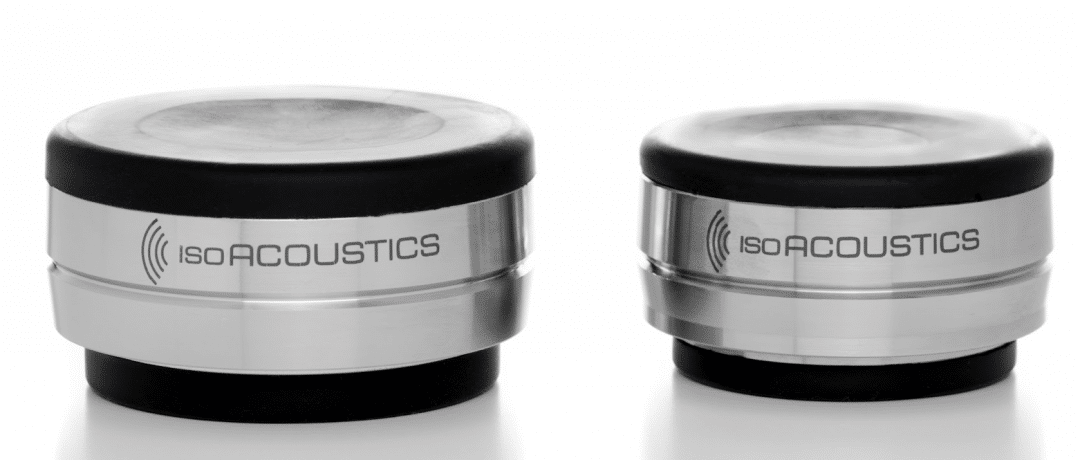
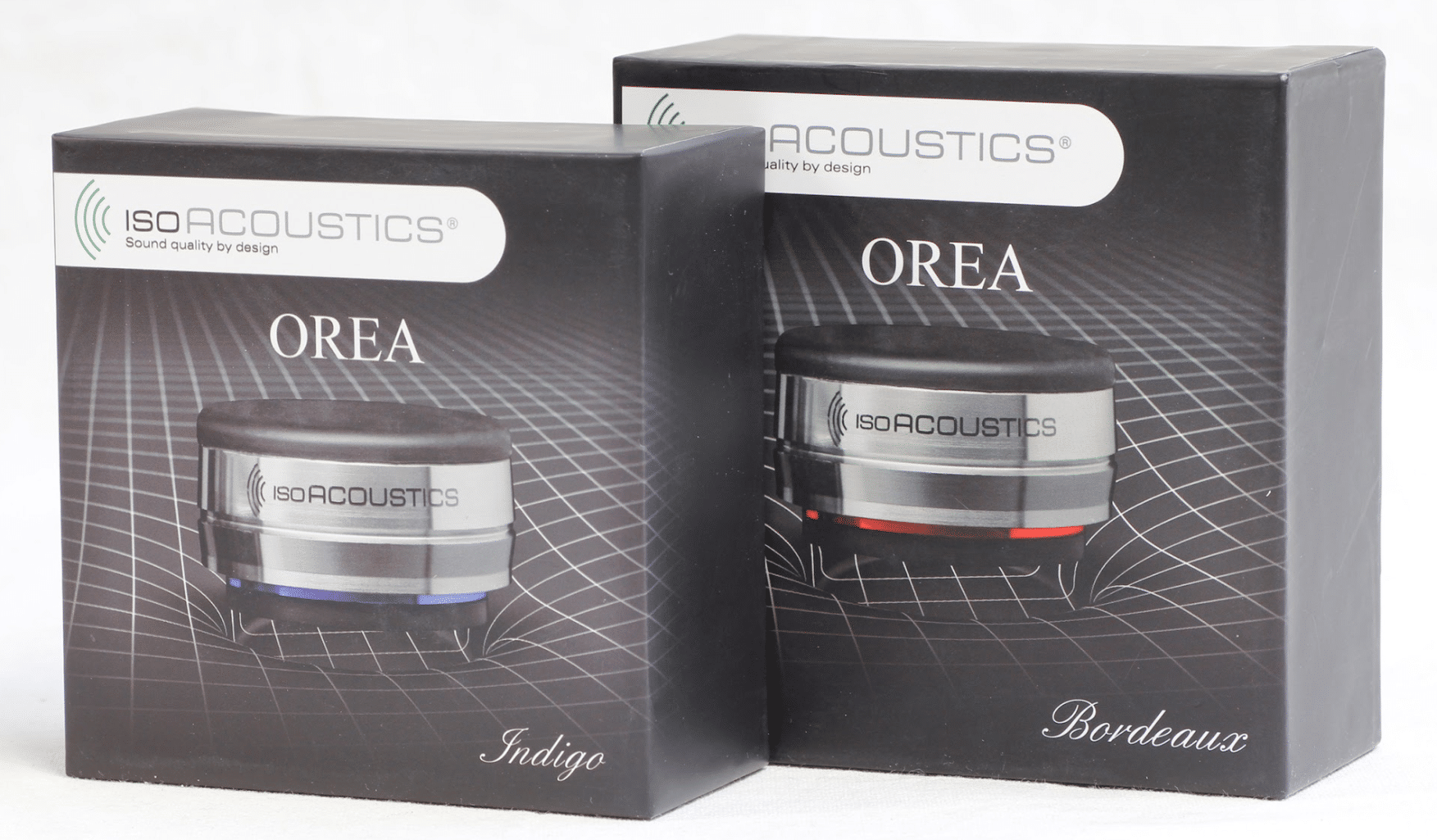
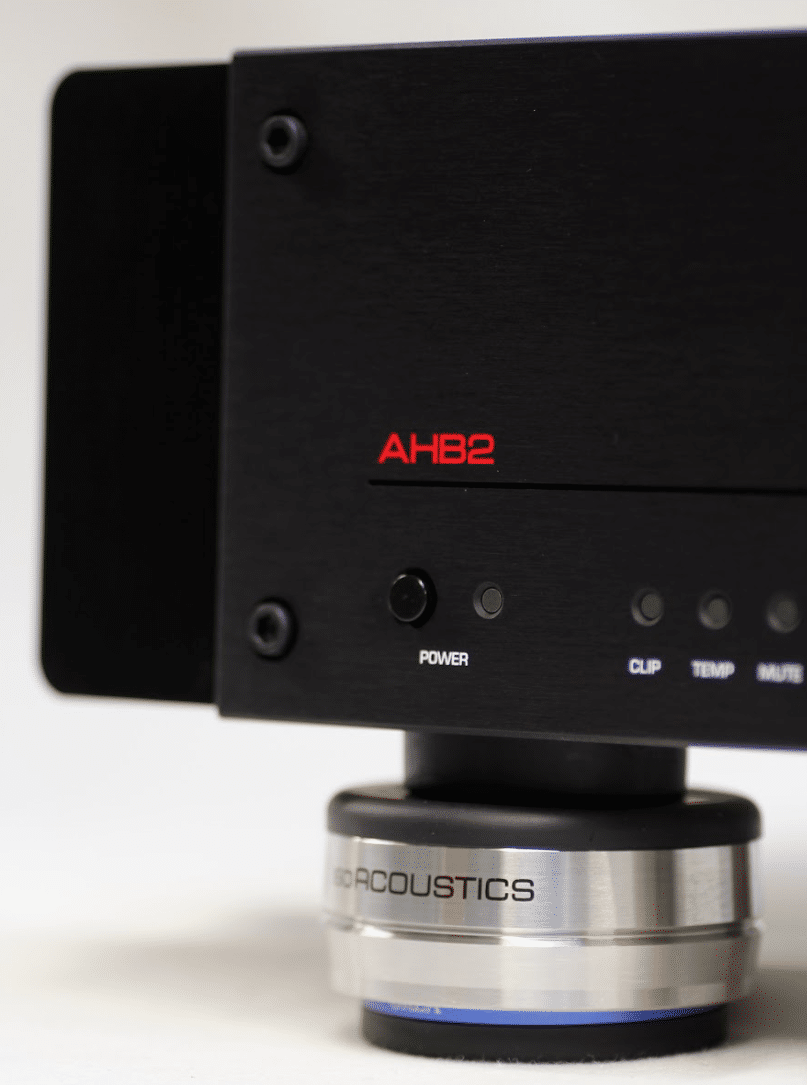
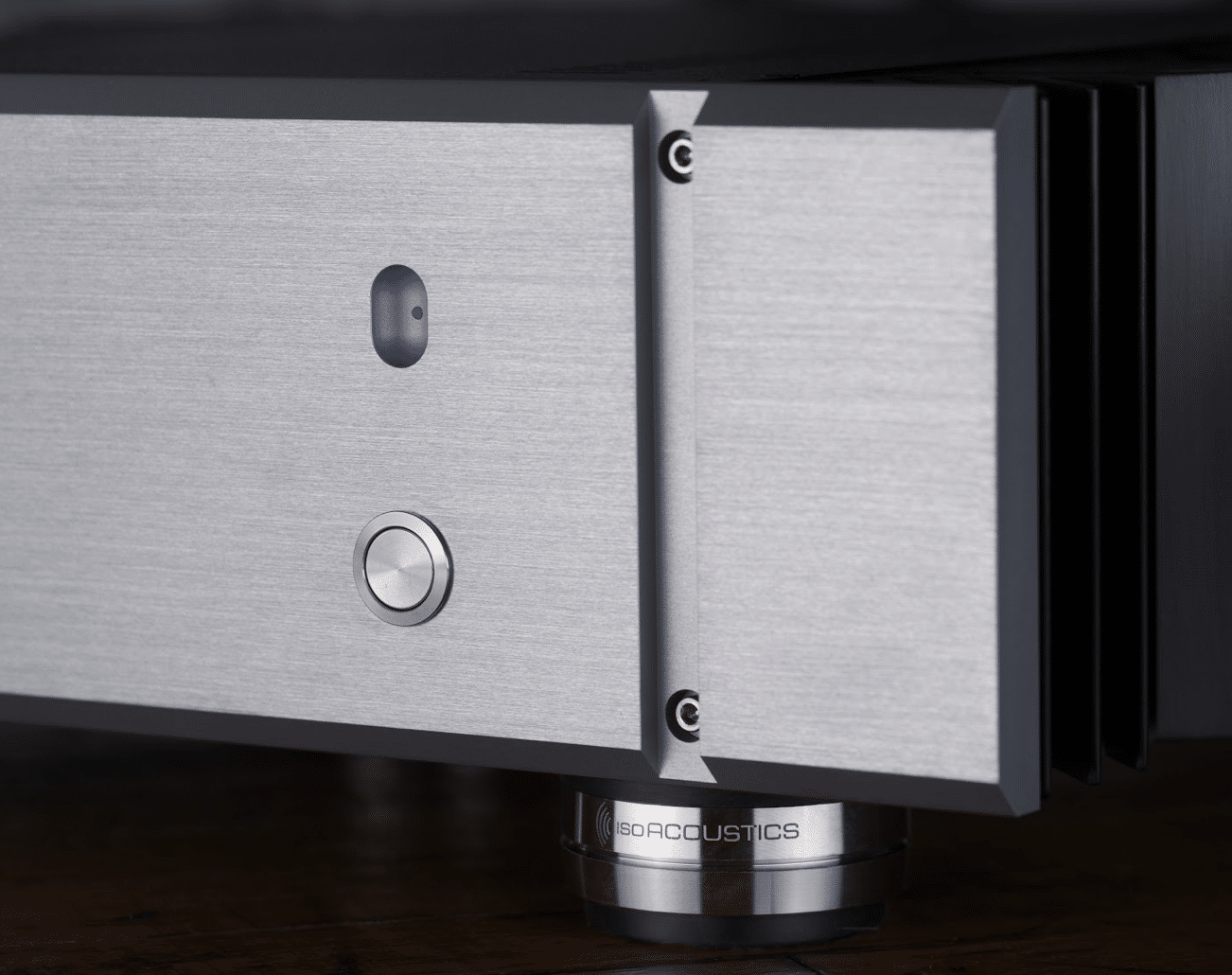



Let the cable and tweak haters bloom.
🙂
Hey Paul: Such devices as Isolation feet (or ‘Coupler’s) can have a dramatic impact (easily discernible) on SQ -as you indeed describe. Yet in my experience, although changes are easy to identify -it’s often for the worse.
It strikes me unusual that the “Footer” makers have absolutely no idea as to the products the footer’s will be used will be employed. .
The very notion of “isolation” (transfer-of-energy/noise) requires intimate knowledge of the component the footers will be supporting. One CANNOT address noise/vibration without examining the entire ‘structure’. And even then, on what platform/shelf does the unit occupy ? And what type of equipment support/stand?
Without this information (or understanding) such devices are a hit/miss proposition.
That you experienced the (rare) ‘hit’ was nothing more than lucky -a lottery win in essence. With so many other factors at play, I’d recommend users stay with the components (factory) footers and invest in a quality, high-rigidity (low-mass) equipment support/stand.
peter jasz
Totally agree – although your point is better aimed at what my basic role is as a journalist. So I’ll reiterate that here and now for the eyes of anyone else who might read it. My job, this site and the editorial on it is here only to guide you. Not to tell you what to do. The ultimate arbiter is you and your ears. What I can provide is advice and a filter of sorts. Using my experience, my reference system (built up and honed over many years) and my ears, I can whittle down a shortlist for you to work from. That’s what I’m here for and that’s what any professional magazine or site exists for – to advise only. Never let anyone *tell* you what to buy. On that basis, this review says that I like this product, it works on my system and it provided my ears with quality music. From that point onwards, it’s up to you to take responsibility for your buying decision.
Hi Paul: Thanks for the reply. And I see my ‘responsibility’ as offering up readers insight into the factors at play with respect to (in this case) isolation devices. My point (originally) was to point out the numerous factors involved when evaluating isolation, coupling/decoupling devices.
.
Put another way, simply shove whatever may be lying around the house under the component -and listen. I guarantee readers/listener’s will marvel at its impact. Cost? Zero.
And finally, a word of experience brought forth: Marvel not at “Wow, that changed the sound”, but rather did it change for the better ? For that, we need to focus on the message (music) itself: is it far more communicative, transparent, engaging, “clear”, involving, dynamic and tonally honest, layered, infused with finesse, harmonic integrity ? Or will one focus on “more” bass, or any other slew of adjectives used to denote perceived frequency balance?
The review, my original comment, your reply and this (reply) should do the trick for anyone considering such devices.
Happy listening,
peter jasz
Paul
Is it necessary to locate the isoacoustics feet directly underneath the existing feet or is adjacent to those feet work just as well? Provided the existing feet don’t touch the base.
Thanks John
Hi John – it depends 🙂 Under the original feet is fine but might result in the entire chassis being raised too high, especially if its in a shelf. Another option is to remove the original feet which will, often, be of a much lower quality than the Orea feet. Then put the Oreas there. Another option is under the chassis itself but avoid any screws and rivets and the like which will lower the feet’s effectiveness.